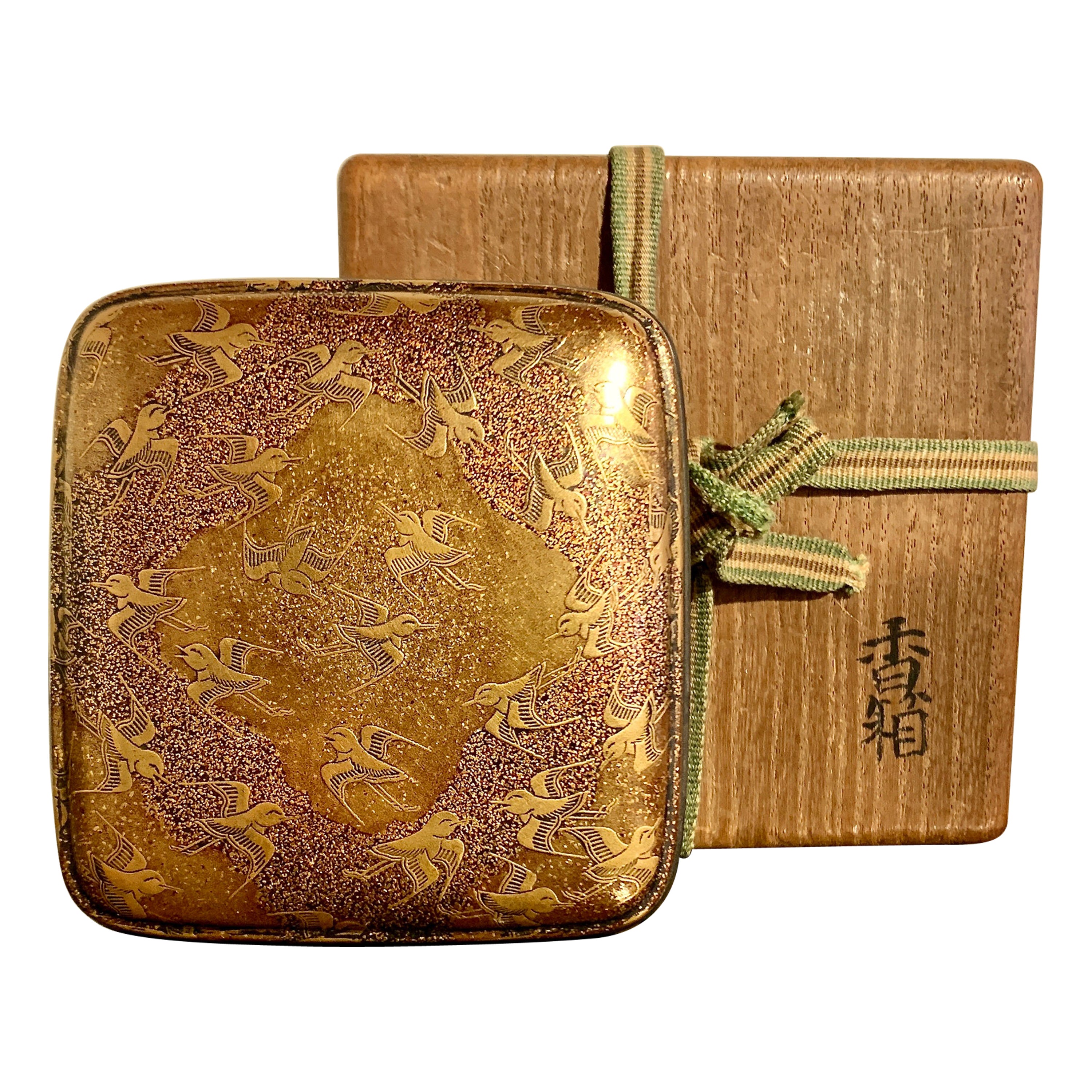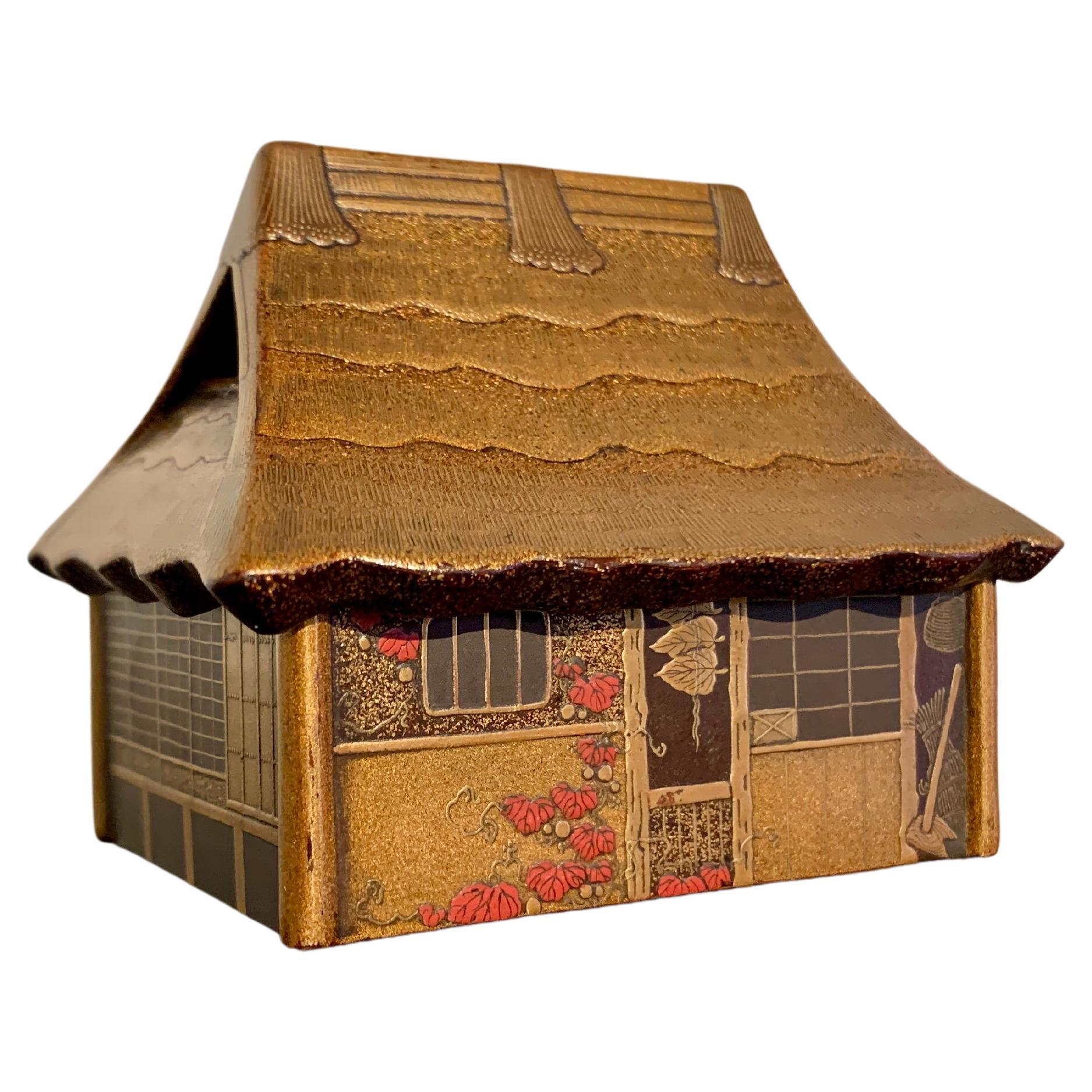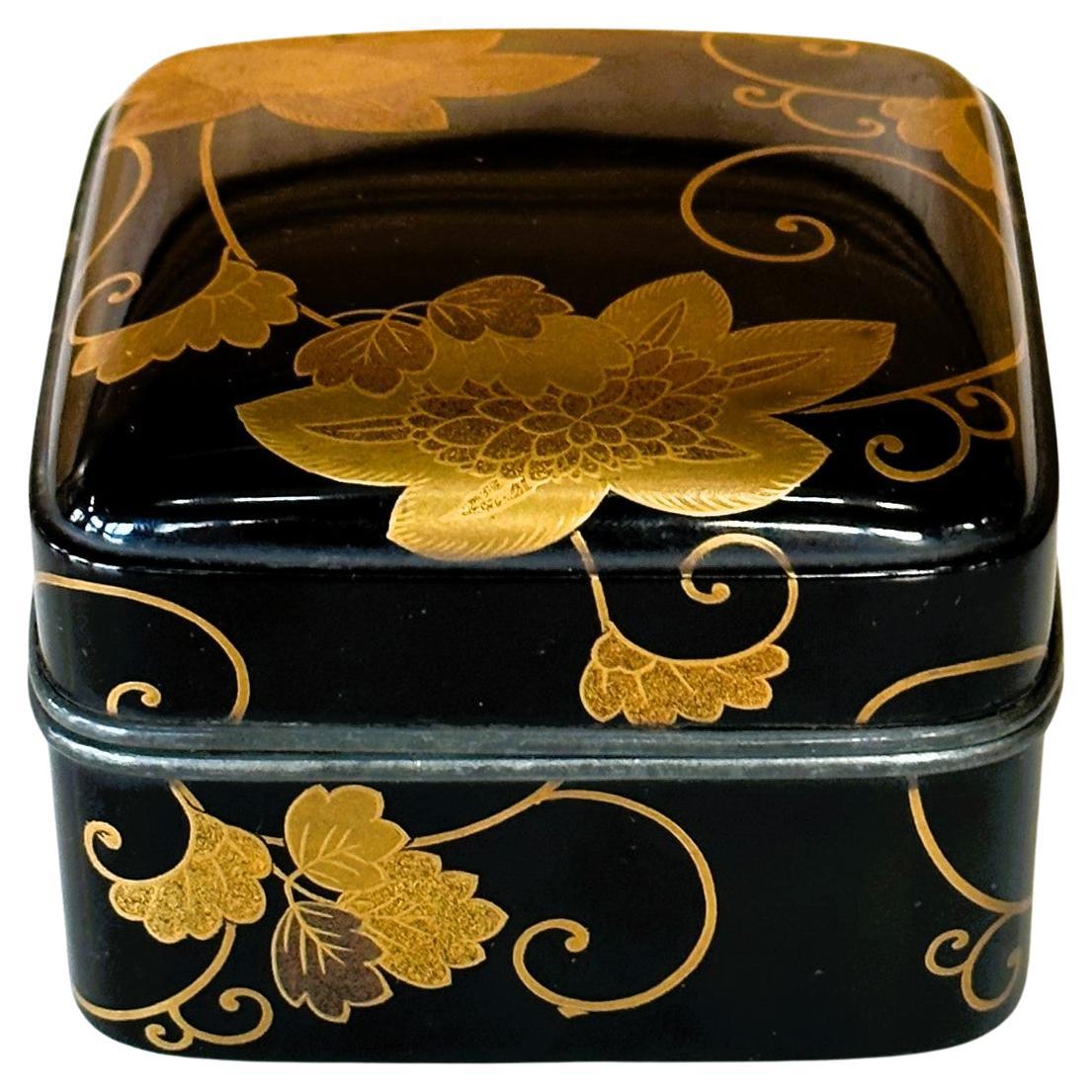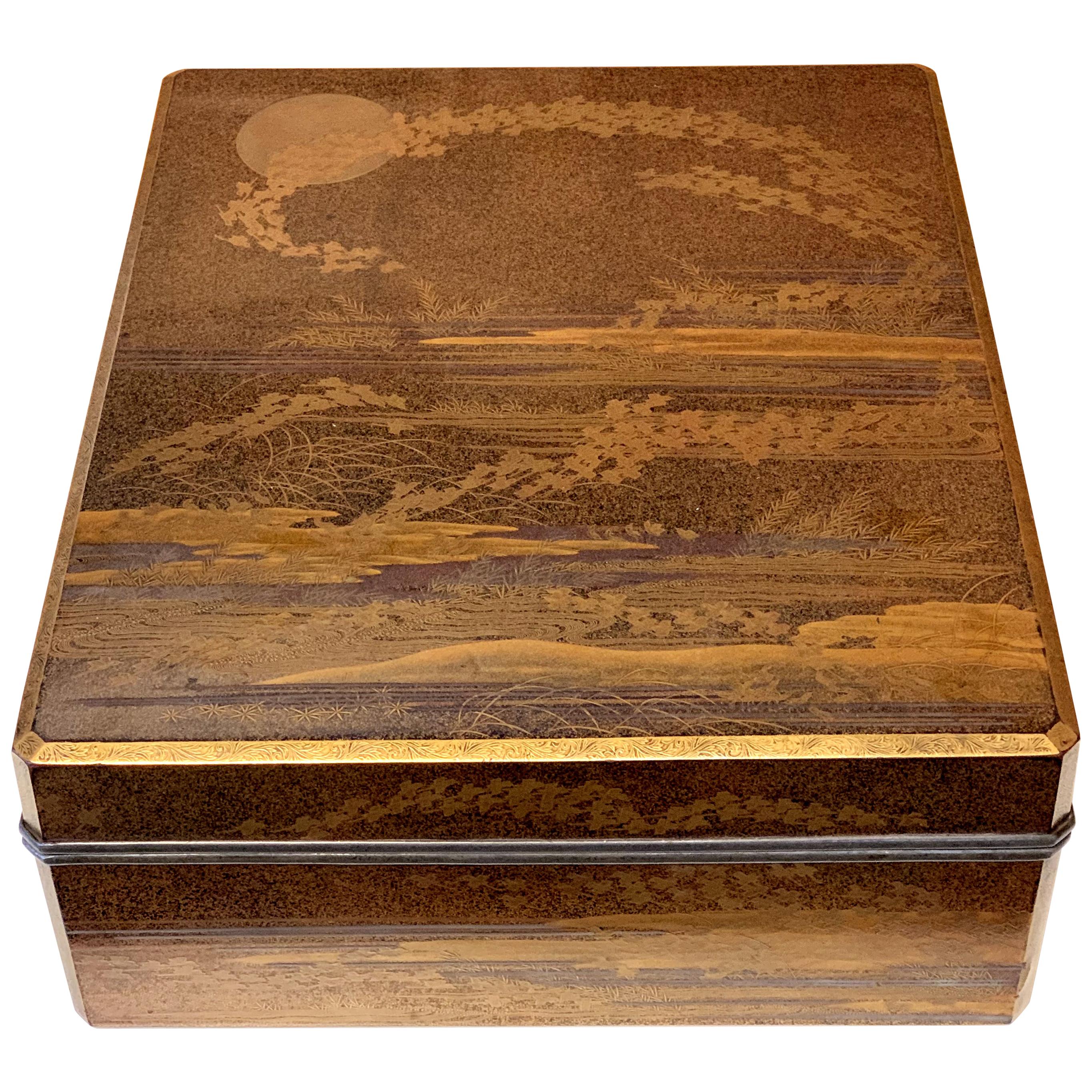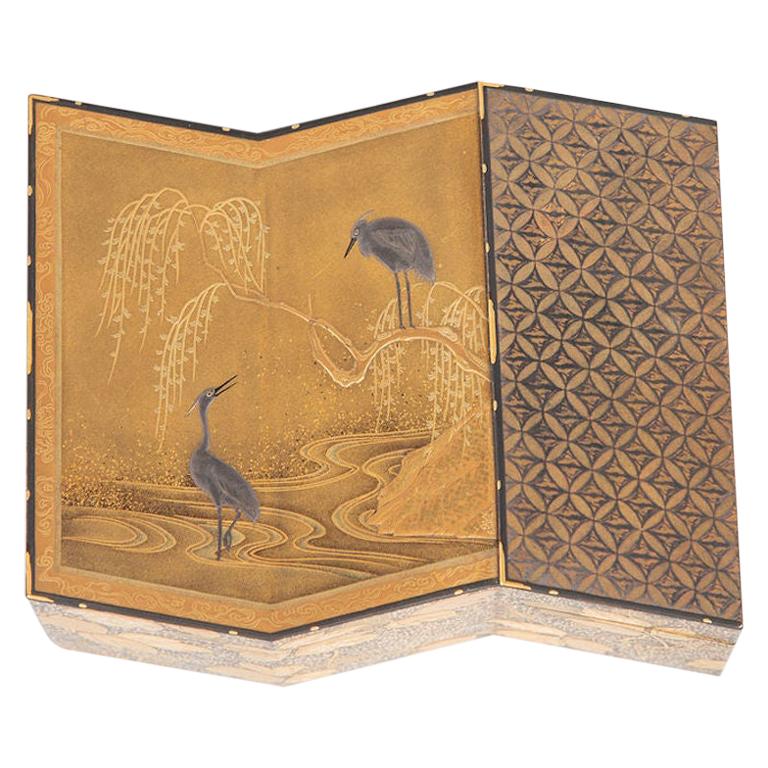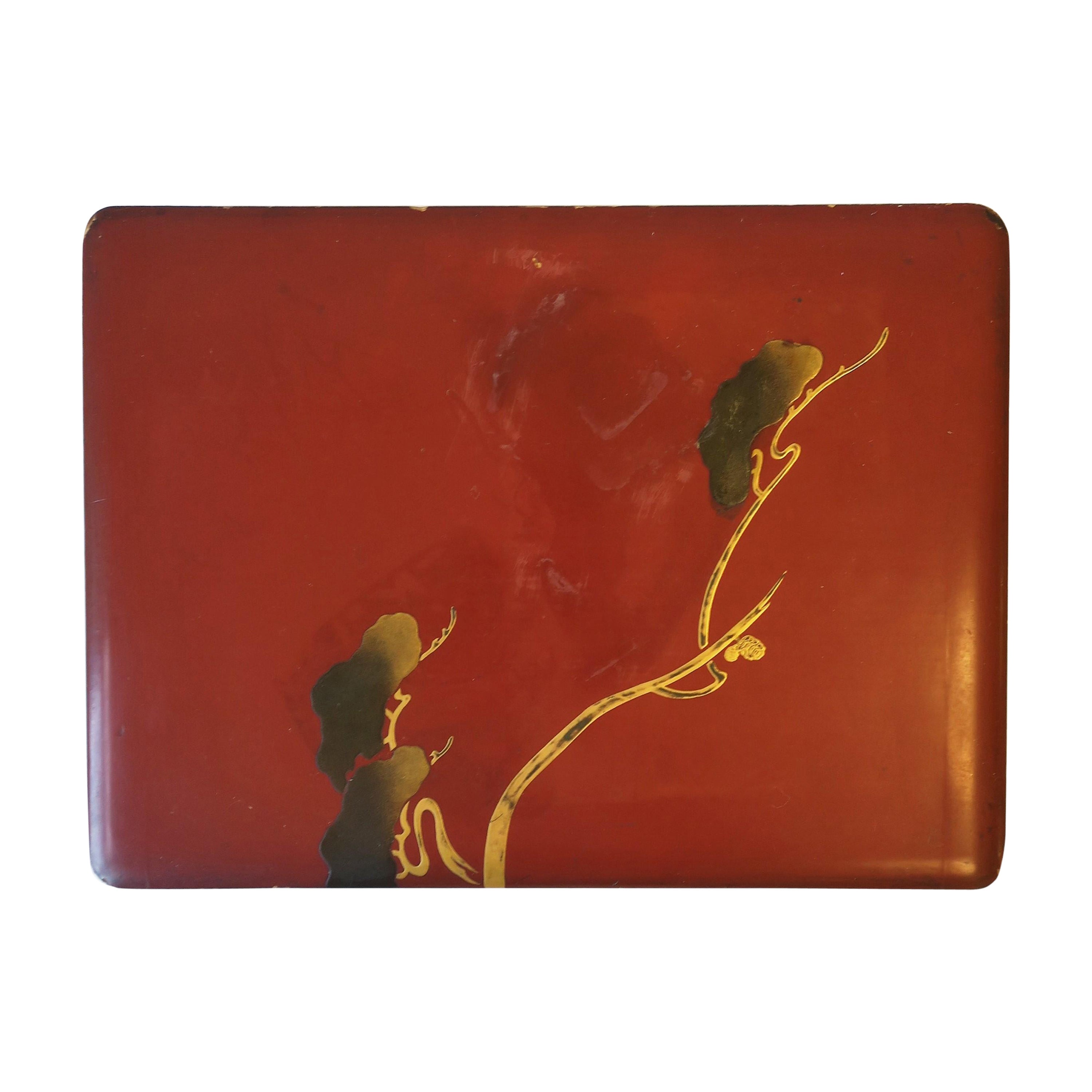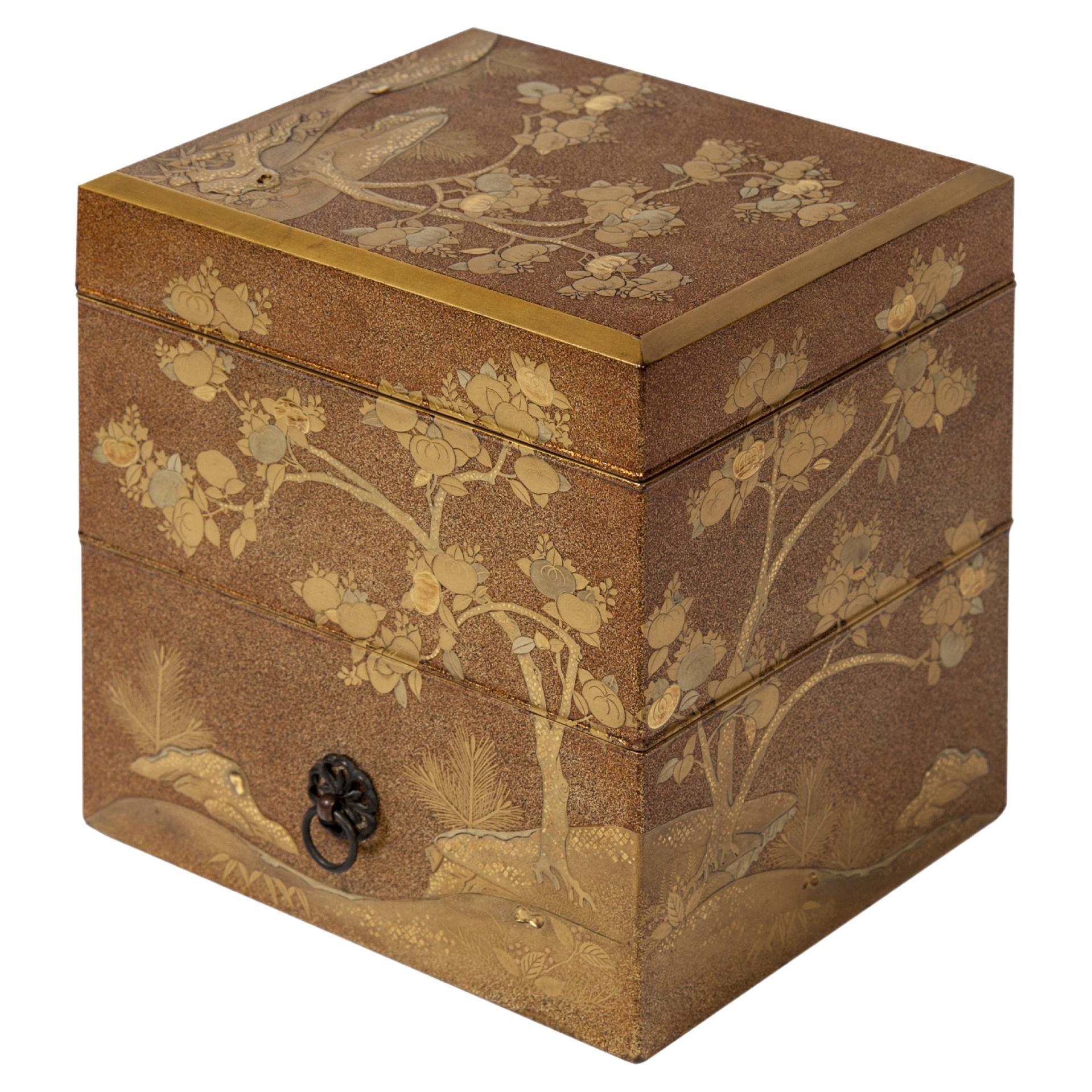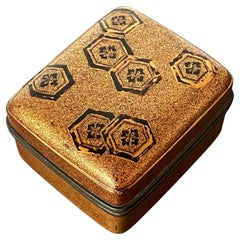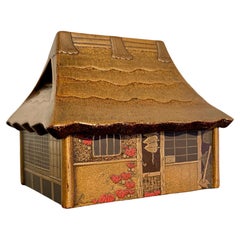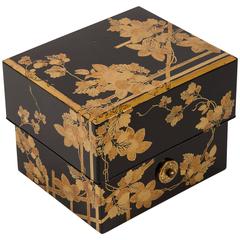
Edo Japanese Lacquered Incense Box
View Similar Items
1 of 9
Edo Japanese Lacquered Incense Box
About the Item
- Dimensions:Height: 4.14 in (10.5 cm)Width: 5.12 in (13 cm)Depth: 5.52 in (14 cm)
- Materials and Techniques:
- Place of Origin:
- Period:
- Date of Manufacture:1800
- Condition:Wear consistent with age and use.
- Seller Location:Paris, FR
- Reference Number:Seller: 2016-3581stDibs: LU104865540733
You May Also Like
- Japanese Lacquer Incense Box, Kogo, Momoyama or Edo Period, 16th/17th CenturyLocated in Austin, TXA wonderful Japanese lacquer incense box, kogo, with a design of sparrows in flight, late Momoyama or early Edo Period, circa 1600, Japan. The small box, called a kogo, was used t...Category
Antique Early 17th Century Japanese Edo Lacquer
MaterialsGold, Pewter
- Antique Japanese Lacquered Incense Box Kobako Ex-Christie'sLocated in Atlanta, GAAn old Japanese lacquered small box likely used to contain incense powder called Kobako, circa Momoyama to early Edo period (16-17th century). The rectangular form box with a fitted ...Category
Antique 17th Century Japanese Japonisme Lacquer
MaterialsLead
- Japanese Lacquer House Shaped Incense Box, Kogo, Meiji Period, JapanLocated in Austin, TXA delightful and intricately decorated lacquer box for storing incense, kogo, in the form of a traditional farm house, Meiji period (1864 - 1912), late 19th century, Japan. The kogo, or small box for storing incense, takes the whimsical form of a traditional Japanese home, minka, with the removable high, thatched roof serving as the cover for the box. The exterior of the home has been painstakingly decorated in maki-e lacquer against a matte black lacquer ground. Traditional shoji doors, bamboo blinds...Category
Antique Late 19th Century Japanese Meiji Lacquer
MaterialsLacquer
- Antique Japanese Lacquered Incense Box Kobako in Kodaiji StyleLocated in Atlanta, GAAn antique lacquered small box that was likely used to contain incense powder (it is called Kobako in Japanese), circa early to mid-19th century of the Edo...Category
Antique 19th Century Japanese Edo Lacquer
MaterialsWood, Lacquer
- Large Japanese Lacquer Box Early Edo Period Ex-Christie'sLocated in Atlanta, GAA large lacquer Ryoshibako (Paper box in Japanese) finely decorated with Maki-e circa 17th century early Edo period. The box is of an impressive size and was used to store paper documents. Both sides of the lid were elaborately decorated with maki-e and the edge was befitted with lead rim, an early practice before the silver rim became common later. The interior and base were finished in Nashiji. The night scene on top surface of the lid depicts flocks of chidoris flying in formation from a sea shore swaying with reeds under a full moon, using hiramaki-e in both gold and silver. Ribbons of clouds were achieved with different densities of gold powder. The underside, in contrast, shows a crescent moon in takamakie-e above the sea with ferns and reeds. Chidoris, the plovers, are symbolic in Japanese culture as "thousands of blessings" and longevity. The Namichidori, the pattern in which the chidori flies in the nami (wave) represents the eternal love and safety of couples and families. For detailed references on the historical background and the use of chidoris on lacquerware, see the reference below. This very lacquer box was featured for sale as lot 339 in Christie's London Sale Japanese Art...Category
Antique 17th Century Japanese Japonisme Lacquer
MaterialsWood, Lacquer
- Fine Lacquer Kogo 'Incense Box'Located in Hudson, NYExquisitely detailed incense storage box in gold lacquer with silver and gold overlays of a folded screen with heron and willow design. Flowers and winding leaves on the sides.Category
Antique Late 19th Century Japanese Meiji Lacquer
MaterialsLacquer
Recently Viewed
View AllMore Ways To Browse
Sake Ewer
Leather Top Side Table With Drawer
Antique Nightstand Tables
Round Platters Glass
Side Table With Drawer And Doors
Black Chest Legs
German Blue Crystal
Mid Century Modern Bathroom Mirror
Solid Log
Louis Xv Rocaille
Wood Settee With Back
Serapi Navy
Ceramic Table Top Lamp Pair
Modern Leather Dining Chairs Pair
Baroque Style Wood Frame
Accent Cabinet Small Cabinet
Mirror Dresser With Drawers
Folk Art Wooden Carving
